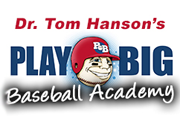Feed the Mistake!
I attended a Functional Movement Screen (FMS) Certification class yesterday.
I’ve been using the Functional Movement Screen as a part of my pitcher evaluations for about 3 years now, and I had studied it thoroughly via books and DVDs, but I had never been to a class.
We recently decided to start using the FMS in our physical therapy clinic as a template for rehab and for a new campaign we have planned called “Feel Better, Move Better. Before we launch the campaign, I’ll need to train all of our clinicians on the FMS and it’s associated corrective exercises, so I thought I should get certified just to be sure I wasn’t missing anything.
I can’t tell you how many seminars, classes, webinars, books, videos, etc… I have consumed in this undying quest to learn more and to find new and innovative ways help my pitchers and my patients get better. My wife Kathy and my business director, Amy, would both shutter if they knew the exact amount of cash I have dumped into this project of passion called The ARMory.
Some of the products or experience have been unquestionable home runs (e.g., my first visit to The Texas Baseball Ranch).
Others…not so much.
But one thing is certain.
No investment I have ever made has turned out to be a total bust. No matter how irrelevant a piece of educational material or a presentation may have seemed, I have always managed to find at least one thing – one nugget — I could take away that I could use to help my students or my patients.
This class was $450 and took 8 hours to complete. I sat through most of it learning very little that I hadn’t already gotten from my previous study and through experience, so as the lunch hour approached, I was beginning to wonder if I had wasted my time and money.
No worries, I downloaded a copy of Thomas Myers’ “Anatomy Trains” on my I-pad and covertly read about the essence of connective tissue mobility and myofascial systems in the body. As with anything new that I learn, I became mesmerized by the material in the text. But out of respect for the speaker, Jason Green, I kept one eye and ear on his message.
During the lunch break, I sat alone and read some more, then settled back into my seat for the rest of the seminar. I opened my I-pad, expecting to immerse myself in the fascinating information, but then Jason said something that rocked my world.
He was talking about a technique he uses when correcting a bad functional movement pattern, and he called it “feed the mistake.”
For example, if a patient does a deep squat and his knees buckle inward, one possible correction is to put an elastic band around his knees, pushing him further into the bad movement. The patient must then push against the band or his knees will completely collapse. By pushing back in the opposite direction of the mistake, the movement pattern normalizes.
I was blown away!
It makes so much sense!
Why hadn’t I ever thought of that before?
Feed the mistake!
So today I was in the 6:00 pm class with Ty (my son and my director of player development), and we had this 17 year-old righty named Kenny who was losing velocity and command due to a severe postural disconnection to his glove side. His spine was erect and his shoulders were square as he moved out, but right at weight bearing foot plant on his lead leg, his trunk lurched violently toward first base and he lost stability. At release, the ball sailed high and to his arm side, over and over again. He looked frustrated and confused.
I had seen the same aberration many, many times in the past and had found it very difficult to correct. I had tried everything from placing a barrier on the glove side, to telling them to tighten their abs as they move out. Nothing really worked. So tonight, with Jason Green’s lecture fresh in my mind, it hit me.
Feed the mistake!
I recalled a discussion I overheard between Dallas Baptist University pitching coach Wes Johnson and Coach Wolforth at Rico’s Tex-Mex restaurant in Conrad, TX a few months ago. Granted, my recollection may have been slightly clouded by the giant Dos Equis that I always enjoy after an Africa hot Friday at the TBR Eliite Pitcher’s Boot Camp, but I remembered Coach Wolforth describing a fix to an arm side command problem by tilting the mound to the glove side.
Feed the mistake.
So I told Ty about my idea.
We videotaped the pitcher from the back of the mound and documented his severe postural disconnect. Then we stuffed sand bags under the right side of the mound, tilting it about 20-30 degrees toward the pitcher’s glove side.
Feed the mistake!
“What are we doing?” Kenny asked.
“Just experimenting,” Ty replied.
When he stepped up on the slanted mound to make his next pitch, Kenny had two choices. He could correct his posture by leaning into the tilt, or he could fall flat on his face.
Ty manned the video camera again.
When Kenny moved out and made his pitch on the slanted mound — even before he finished decelerating — he said, “That felt great!”
The ball hit his target spot on.
Ty and I looked at each other and said simultaneously, “Wow.”
We put the two videos side by side on a big screen TV on the wall and watched the postural disconnection completely disappear on the tilted mound.
We had Kenny repeat the tilted pitch 4 more times, then we took the sand bags away and had him throw one normal pitch.
We repeated the process two more times, then videotaped from behind on the un-tilted mound.
The postural disconnect was gone!!
Kenny asked if he could check his velocity on the radar gun. When he did, he broke his previous record by 3 mph.
Guided discovery….
Addicted to learning…
That’s what we’re all about here at The ARMory.
If you want to be a part of that, Click here and get signed up for one of our
Amazing Rocket Launchers Training Camps!
We’ll get it figured out together and get you headed on a path toward greatness!
What are you waiting for?
What have you got to lose?
Regards,
Randy Sullivan,MPT
P.S. I believe this “feed the mistake” concept is why connection balls are so effective as a motor learning tool, but that’s a topic for another day.










Leave a Reply